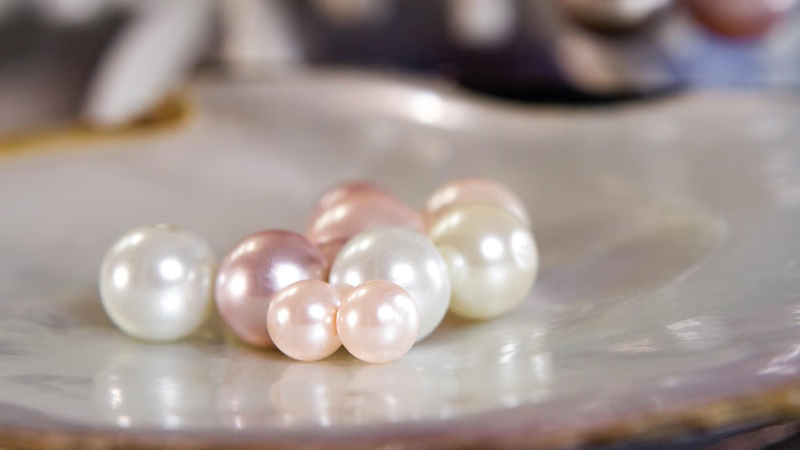
Natural pearls from the Persian Gulf showcase unique beauty.
Natural pearl fishing in the Persian Gulf has a rich history that dates back centuries. The Persian Gulf, particularly the waters surrounding present-day Bahrain, was renowned for its abundant oyster beds and high-quality natural pearls. The region was once one of the world's primary sources of natural pearls. Traditional pearl fishing in the Persian Gulf involved skilled divers who would plunge into the depths of the sea to collect oysters from the ocean floor. These divers often used techniques such as free diving or using weighted baskets to reach the oyster beds. The divers faced significant risks, including drowning, shark attacks, and the bends (decompression sickness) due to diving without modern equipment.
Once the oysters were collected, they were opened, and the pearls were extracted. It was a labor-intensive process that required great expertise to identify valuable pearls. The pearls were then sorted, graded, and sold in local markets or traded with merchants from around the world. Natural pearl fishing was a major industry in the Persian Gulf region, contributing to the economy and cultural heritage of coastal communities. However, the advent of cultured pearls in the early 20th century, along with overfishing and environmental changes, significantly impacted the natural pearl industry. Cultured pearls became more affordable and accessible, leading to a decline in demand for natural pearls.
Pearl fishing is one of the very old important jobs in the southern coast of Iran, and throughout history, part of the livelihood of the people of this region was always provided by fishing and selling pearls. The vastness of the Persian Gulf meant that fishermen and pearl traders, in order to save their time and money, did not dive anywhere and did this in areas that were famous for the existence of pearls or their abundance. These pearl diving places were called "Mughas" or "Mughas al-Lulu". Among the most famous coves of the Persian Gulf are the surrounding waters of Kish Island.
Until a century ago, the Persian Gulf was considered one of the most important centers of sea urchin fishing. The habitats of Iranian pearls were mostly in the waters around Khark Island, Kish Island, Lawan Island, Qeshm Island, the waters of Shibkoh and Bastane ports around the Bahrain archipelago. Throughout history, Kish Island was very famous for pearl fishing.
Sometimes pearls, sometimes fish and shrimp, and sometimes oil have added to the economic importance of the Persian Gulf. More than a hundred types of fish are caught in the Persian Gulf, and this problem exists in very few seas in the world. The pearl of the Persian Gulf, as a very imaginative and practical material in the world of jewelry, is followed and studied by those interested in this field. Many critics believe that Persian Gulf pearls are the best examples of original and natural pearls in the world. The historical background of the Persian Gulf and human interaction with this ecosystem to reach valuable raw materials can be easily traced through historical books.
Today, natural pearl fishing in the Persian Gulf is a rare and limited practice. It is primarily conducted for cultural or historical purposes rather than commercial gain. The focus has shifted to the preservation of the traditional techniques and the promotion of the region's rich pearling heritage. Museums, exhibitions, and educational initiatives showcase the significance of natural pearls in the Persian Gulf's history and culture. The quality of pearls in Iran and the Persian Gulf is largely influenced by its special nature. In rare cases, you can see salty and sweet waters and springs next to each other. The nature of the sea has a great influence on the formation and activity rhythm of organisms. The pearl of the Persian Gulf is also formed in the inner shell of molluscs, and if we humans abuse the sea ecosystem or pollute it, this process will face a problem.
-

Natural pearl fishing in the Persian Gulf has a storied history, particularly around Bahrain, known for its rich oyster beds. Skilled divers employed traditional techniques to harvest oysters, facing dangers like drowning and shark attacks. This labor-intensive process involved extracting and grading pearls for local markets and international trade, significantly contributing to the region"s economy and cultural heritage. However, the rise of cultured pearls in the early 20th century, coupled with overfishing and environmental changes, led to a decline in natural pearl demand. Historically significant areas for pearl diving included "Mughas" or "Mughas al-Lulu
-
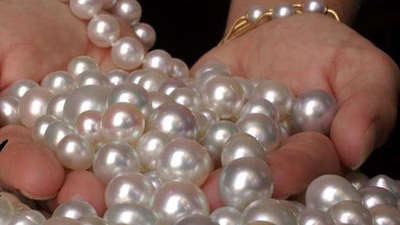
Pearls are categorized based on their cultivation methods, environments, and the mollusks that produce them. The two main types are natural and cultured pearls, with further distinctions between saltwater and freshwater varieties. Saltwater pearls, such as Akoya and South Sea pearls, are known for their high luster and larger sizes, while freshwater pearls are more abundant and come in various colors but typically have a lower shine. Akoya pearls, primarily from Japan and China, range from 2 to 10 millimeters in size and are often white or cream-colored. South Sea pearls, sourced from Australia and the Philippines, can be as large as 20 millimeters and exhibit luxurious luster in shades of white or gold. Mabe pearls have a unique shape due to their cultivation method involving a half-spherical nucleus. Conch pearls are rare gems known for their vibrant colors found in queen conch mollusks. Environmental factors like water quality and temperature significantly influence pearl characteristics, leading to variations in size, shape, and color among different types.
Tahitian pearls stand out for their dark hues cultivated in French Polynesia. Overall, the pearl industry is shaped by both natural processes and human intervention through farming techniques.
-
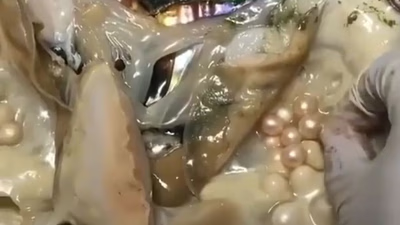
The Persian Gulf, particularly around Bahrain, has a rich history of producing some of the world"s finest natural pearls, known for their luster and unique colors. South Sea pearls from Australia, Indonesia, and the Philippines are also highly valued for their size and creamy hues. The Gulf of Mannar between India and Sri Lanka is recognized for its high-quality pearls with warm tones. Historically, the Persian Gulf"s pearl industry thrived until the early 1930s when oil discoveries shifted focus to more profitable ventures. This led to overfishing and pollution that devastated the pearl industry. Today, pearl oyster beds remain in the Persian Gulf, especially near Bahrain, where fishing has occurred for over two millennia. Despite other countries like Japan and Australia producing notable pearls, the Persian Gulf"s natural pearls are still considered among the best due to their unique environmental conditions. However, the legacy of traditional pearl diving has been largely overshadowed by industrial changes in the region. "
-
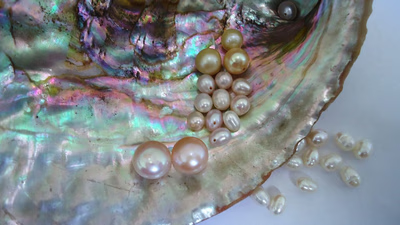
Natural pearls form organically within mollusks without human intervention, resulting from irritants like sand. They are rare and valued for their unique characteristics. Cultured pearls, on the other hand, are created through human intervention by implanting a nucleus into the mollusk, leading to nacre secretion. While they closely resemble natural pearls in appearance and are more affordable, distinguishing between the two can be challenging. Specific weight is one method of differentiation, with natural pearls typically weighing less than 2. 73. Cultured pearls exhibit luminescence under UV light, while artificial pearls are man-made from materials like glass or plastic and lack the organic qualities of natural or cultured varieties. The rise of artificial pearl production in China has significantly impacted the natural pearl industry in regions like the Persian Gulf. Understanding these differences is crucial for consumers and traders in the pearl market.
-
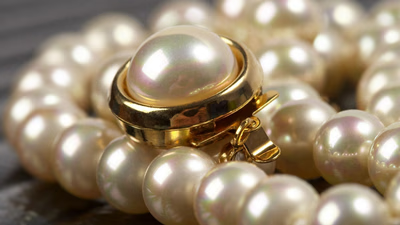
The price of pearls is influenced by several key factors including type, size, shape, luster, color, surface quality, and origin. Natural pearls and rare varieties like conch or Tahitian pearls are more valuable due to their scarcity. Larger pearls are generally more expensive, with significant price increases for larger sizes. Round pearls are the most sought after for their symmetry, while other shapes like baroque are less valuable. Luster plays a crucial role; pearls with high luster reflect light better and command higher prices. Freshwater pearls are typically less expensive than Akoya or Tahitian varieties. The South Sea pearl is the most expensive type, with prices ranging from $1,000 to over $100,000 based on size and quality. The origin of the pearl also affects its value; those from renowned regions like the Persian Gulf or South Sea are often priced higher due to their reputation.
Market demand and trends can further influence prices as consumer preferences shift. Overall, the value of a pearl is determined by a combination of these factors.
-
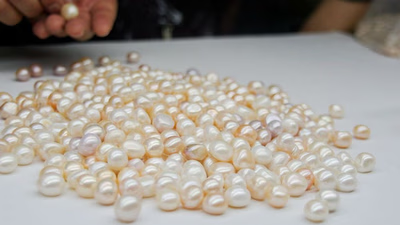
Natural pearls are gemstones formed within mollusks, such as oysters and mussels, when an irritant becomes trapped in their soft tissue. The mollusk secretes layers of nacre around the irritant, resulting in a pearl over several years. Factors like the species of mollusk and environmental conditions influence the pearl"s shape, luster, and color. Historically valued for their beauty, pearls have been traded for thousands of years, particularly in regions like China. They can vary in color from white to blackish gray and come in various shapes, with round pearls being the most sought after. The size of pearls typically ranges from 7 to 9. 5 mm, with larger and smoother specimens commanding higher prices. While natural pearls are rare and highly valued in jewelry, most pearls on the market today are cultured, created through human intervention to initiate pearl formation.
Cultured pearls resemble natural ones but are more affordable and widely available. "






